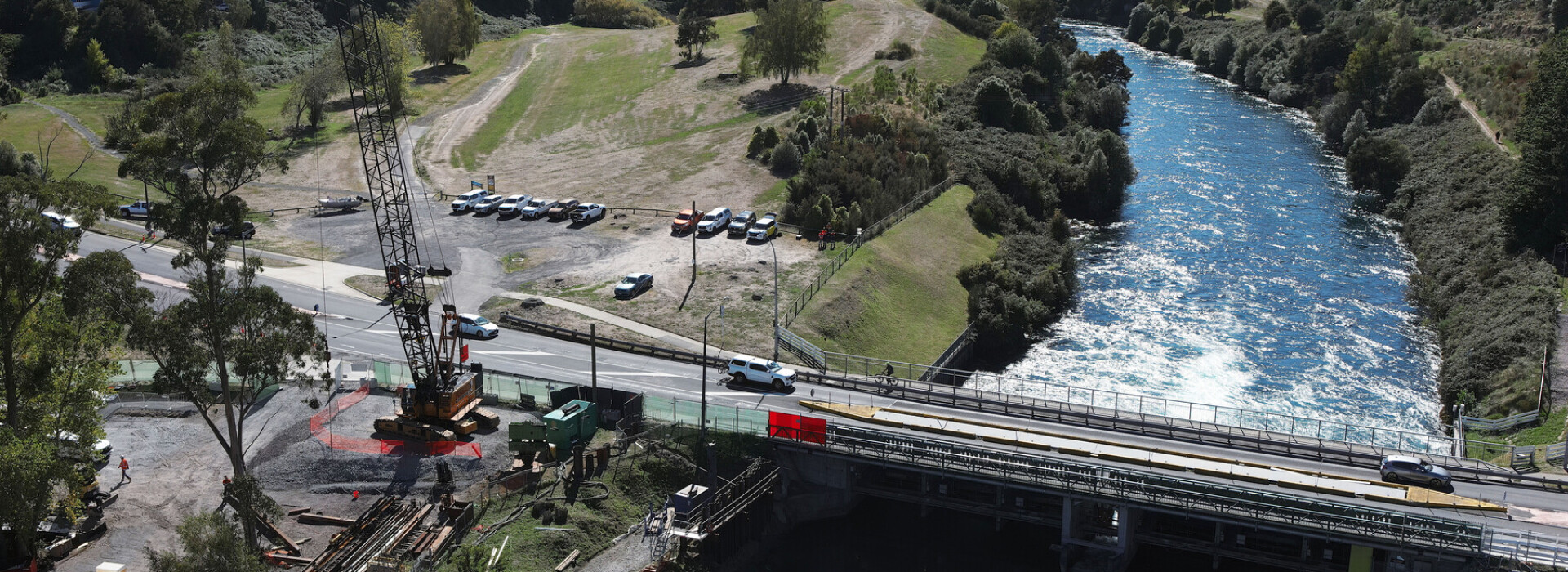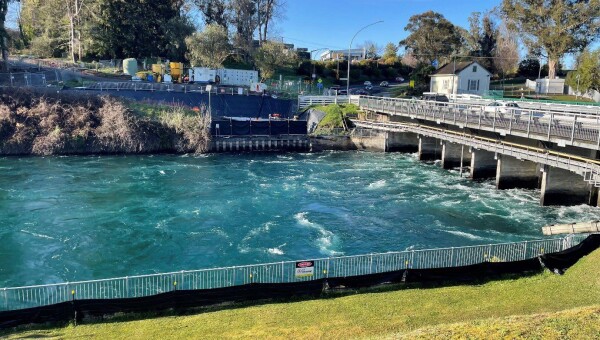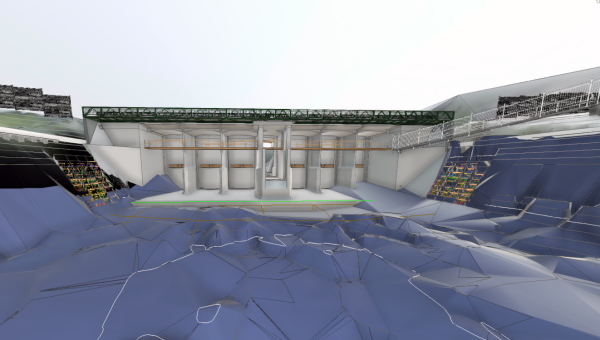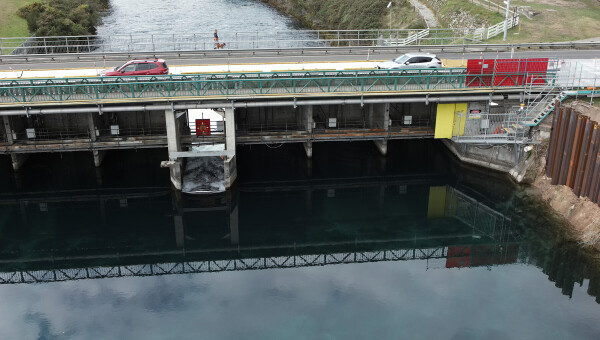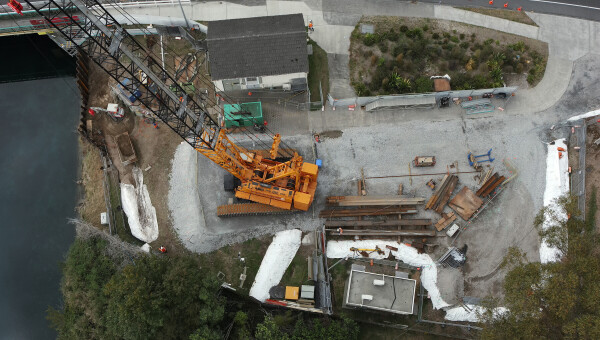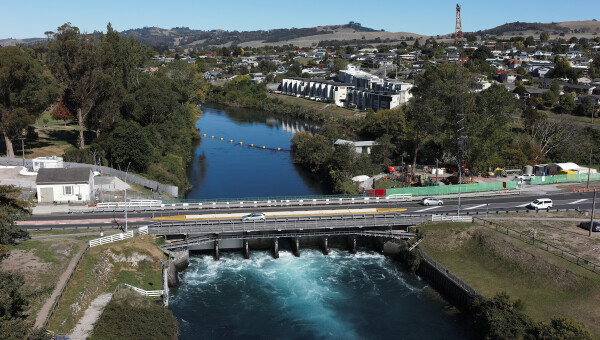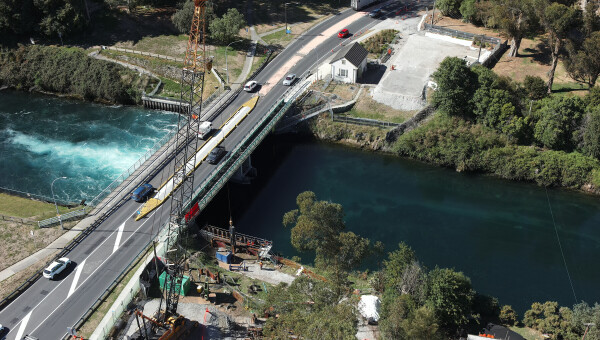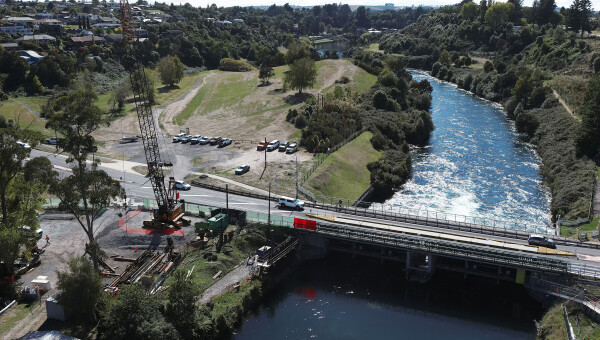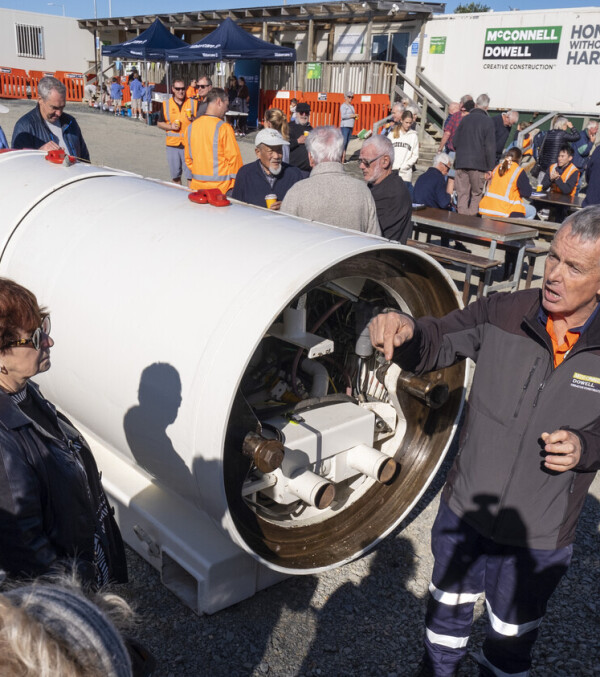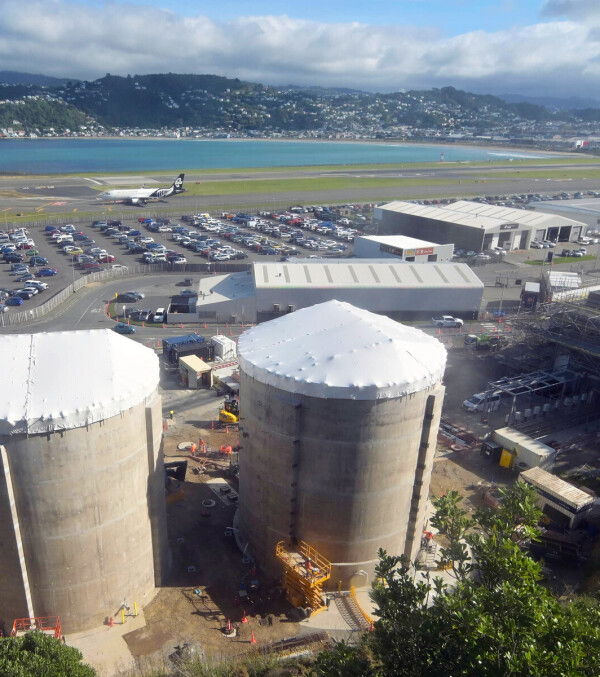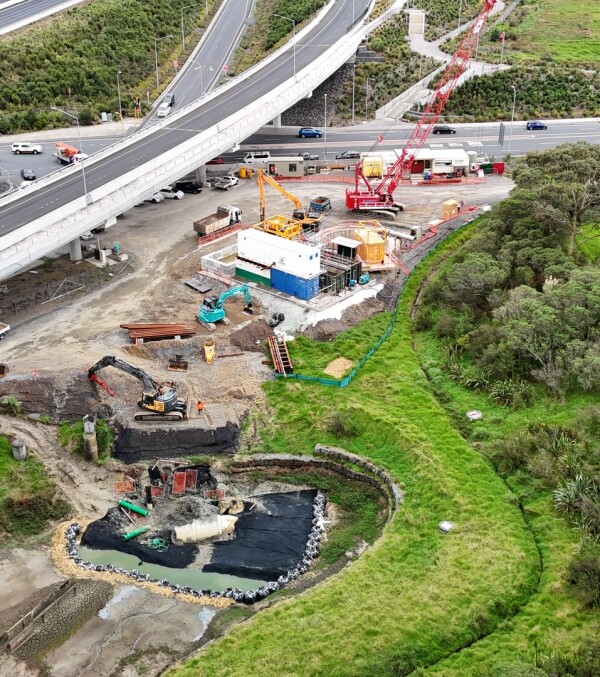|
Customer: Mercury New Zealand Contract: Construct Location: Taupō, Central North Island |
Fast Facts:
|
Taupō Control Gate Erosion Repair project for Mercury, involves upgrading the control gates, and stabilising the banks of the Waikato River.
The six concrete gates, set into the bridge, are raised and lowered to regulate the water flow from the Waikato River to the hydro system.
Regular maintenance inspections of the gates showed that while it is still safe for everyday use, changes need to be made to protect it from ongoing erosion on the riverbanks.
Because we are working near the Waikato River, which is a sacred entity for mana whenua, Mercury and the team liaised closely with local iwi.
Ngā Hapū O Te Hikuwai O Tūwharetoa provided cultural advice to the project including developing Accidental Discovery Protocols to manage potential archaeological finds.
An iwi representative held a cultural induction for the team before work started and at the end of Phase One, we planted a tree and held a karakia.
Phase One
Phase One of the project includes the stabilisation of an area of the riverbank downstream from the gates on the southern bank (town side). This phase was completed in November 2024 ahead of schedule.
We applied our experience and expertise in ground stabilisation to develop a detailed design from the supplied concepts. This involved utilising our specialist partner Andy O’Sullivan for the design and Wagstaff for grouting.
The special grout used for Phase One hardens quickly even if it is in contact with water which helps protect the river from contamination.
Phase Two
Phase Two involves installing sheet piles on both sides of the Waikato River, immediately upstream of the control gates, to protect the structure from erosion. We will self-perform the sheet piling upstream in February 2025.
A crane will work on both sides of the bridge during the project, on a platform designed by our in-house team, to install the 12m-long sheet piles which will protect the riverbanks from erosion.
This project is expected to be completed by mid-2025.

